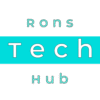BTEC Nationals IT (AAQ) - Unit 1 - Information Technology Systems Resources
BTEC Nationals AAQ IT - Unit 1 Introduction
Personal Computers
- Includes **Desktop and laptop computers**.
- Used for **general tasks** like communication and entertainment.
- Connect to **networks and peripherals**.
Multifunctional Devices (MFD)
- **Combine printing, scanning, and copying**.
- Support **document management**.
- Are often **network-connected**. (Example: Smart phone).
Mobile Devices
- Examples: **Smartphones, tablets**.
- Are **portable and wireless**.
- Used to **access apps and web services**.
Servers
Powerful computers that manage resources on a network.
- **File Server:** Stores documents/data.
- **Application Server:** Runs software programs.
- **Web Server:** Hosts websites.
Digital Cameras (Files)
Capture still images and record video.
- Most popular and compressed format: **JPG or JPEG**.
- Raw file formats (uncompressed data) include: **DNG, NEF, CR2, ARW**.
- Can connect to computers or the cloud.
Navigation Systems (GPS)
- **GPS** stands for **Global Positioning System**.
- Help provide **directions**.
- Work by using **satellites in orbit** to calculate your location.
- Often **integrated into vehicles**.
Communication Devices & Systems
Examples of devices and systems used for communication:
- **Phones and VoIP** (Voice over IP).
- **Email systems**.
- **Messaging apps**.
Embedded Systems & IoT
- These systems are **built into machines**.
- They **use sensors**.
- They are part of **IoT devices** (Internet of Things).
- IoT uses Embedded Systems **connected to a network**.
- Examples of microcontrollers: **Raspberry Pi Pico and Arduino devices**.
Use: Personal
Used for **communication and entertainment**, to **organise schedules**, and to **access information**. All device types (laptops, phones, GPS, etc.) are used for this.
Use: Education & Training
Supports **online learning, research and resources**, and **virtual classrooms**. Devices like interactive boards, laptops, mobile phones, and tablets are used.
Use: Social
Involves **social media, messaging apps, and video calls**. Requires **any device with an internet connection** and the ability to use a browser or apps.
Use: Manufacturing
Used to **control machinery** and **monitor production processes**. Goal is to **improve efficiency and quality control**. Examples include industrial computers and sensors.
Use: Creative Tasks
Used for **designing, editing, and producing creative work**. Supports **photography, video editing, and graphic design**. Examples: **drawing tablets, editing software, and cameras**.
Use: Automation and Robotics
Used to **control automated systems and robots**. Primary goals are to **improve productivity, safety, and accuracy**. Examples: **robotic arms and programmable controllers**.
System Diagram
A **visual representation** that shows the **components of a system** and **how they are connected**. Types include:
- **Block Diagram** (simple blocks).
- **Network Diagram** (shows how devices connect).
- **Data Flow Diagram** (shows movement of data).
What is a Flowchart?
A **visual diagram** that uses specific **shapes and arrows** to show the **steps in a process**. The arrows show the **order (flow)** in which things happen.
Benefits of Flowcharts
- Make ** complex processes easy to understand visually**.
- Improve **communication and collaboration**.
- Help in **finding bottlenecks and inefficiencies**.
- Assist in **documenting processes clearly**.
- Increase **efficiency and reduce errors**.
Flowchart Shape: Oval
Represents the **start and end** of the process.
Flowchart Shape: Rectangle
Represents a **process, task, action, or step** in the process.
Flowchart Shape: Diamond
Represents a **decision point**, which is usually a yes/no question that determines the direction of the flow.
Flowchart Shape: Parallelogram
Represents the **input or output** of data or information.
Flowchart Shape: Arrows
Connect the shapes and show the **direction of the flow**.
Unit 1: IT Systems and Digital Devices Quiz
A1.1 - Features Of Digital Devices
Digital Devices & IT Systems Flashcards (40 Cards)
💡 **Hover your mouse over any card to see it flip and reveal the answer!**
